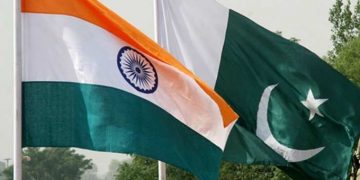New Delhi: Government think tank NITI Aayog has initiated a study to develop a comprehensive action plan to bridge India’s trade deficit with China over time and align trading strategies with emerging geopolitical situation and potential risks to safeguard supply chains.
The Aayog has invited bids from consultants to lead the two studies in areas of reducing trade gap with China and boosting local manufacturing.
The move also comes against the backdrop of simmering tensions between India and China since the Galwan clash in June 2020.
“The centrality of China to lndia’s supply chain in certain industries raises dependency and vulnerability of the lndian supply chains and production networks particularly during crisis situations such as the COVID-I9 and geopolitical conflicts.
“The study would aim to develop a comprehensive action plan to bridge the trade deficit over time and align trading strategies with emerging geopolitical situation and potential risks to safeguard supply chains,” the Aayog said in a notice posted on its website.
The terms of reference of study includes analysing the trends in India-China trade (at product category level) over the recent years to discern patterns of trade dependency and underlying reasons for the same.
The study will analyse the supply chains of India-China trade and also comparable supply chains of India’s trade with other Asian countries to derisk India’s trade.
It will also examine product categories where India has comparative advantage and a sizeable market in China to scale up exports to China.
According to the Aayog, the study should recommend key policies to boost domestic production and productivity in sectors comparable to the global economy not only to reduce the trade deficit with China, but also to capitalise on global supply chain shifts.
“(The study should) analyse the type and quantum off foreign investment which may bridge the technology gap and utilise the abundant domestic manpower for competitive products. Provide recommendations to resolve the same,” NITI Aayog said.
The study will also have to examine tariff, non-tariff barriers, regulatory ecosystem, and market access concerns for Indian exports to China.
Besides, it will have to recommend measures to enable India to diversify supply chains to India, while pointing out what are the sectors to focus, incentives to offer and reforms required to achieve the objective of attracting global supply chains to India.
India’s merchandise trade with the world reached more than $I trillion in 2021-22. During the year, India exported $422 billion worth of goods while importing $613 billion, implying a merchandise trade deficit of $191 billion.
About 38 per cent ($73.3 billion) of India’s merchandise trade deficit was with China alone in 2021-22. During 2022-23, India exported $450 billion worth of goods while importing $714 billion, implying a trade deficit of $263 billion.
About 32 per cent ($83.1 billion) of India’s merchandise trade deficit was with China alone in 2022-23. In 2022-23, among top trading partners, India has the highest trade deficit with China.
On analysing the composition of exports and imports with China, it’s observed that India largely imports capital goods ($47 billion in 2021) from China, followed by intermediate goods ($30 billion), consumer goods ($9.4 billion) and raw materials ($I billion), while it mainly exports intermediate goods ($I I billion) to China followed by raw materials ($6 billion), consumer goods ($3.4 billion) and capital goods ($2.4 billion).
India had a trade deficit with China in three of these four product groups in 2021, namely, capital goods ($45 billion), intermediate goods ($l9 billion) and consumer goods ($6 billion).
Indian and Chinese troops clashed along the Line of Actual Control (LAC) in the Tawang sector of Arunachal Pradesh December 9, 2022 and the face-off resulted in “minor injuries to a few personnel from both sides”, according to the Indian Army.
The terms of reference of ‘Research Study on sectors for India to be Global Manufacturing Hub’ include mapping India’s manufacturing sector with Global landscape and identifying at least 12 sectors which have the potential to transform the country into a manufacturing hub.
Furthermore, the study will also have to recommend strategies and interventions to overcome challenges and promote growth in the identified sectors in order to make India a global manufacturing hub.
Earlier this year, NITI Aayog vice chairman Suman Bery had told PTI that India’s focus should not be on overall trade deficit with China, instead it should be on reducing New Delhi’s dependence on Beijing for certain critical inputs.
According to Bery, the right response is to diversify to other sources of supply for critical inputs including active pharmaceutical ingredients (APIs) and supply chain for renewables.
The last day of submission of bids of the two studies is 7th November and the timeline for data and specification gathering, analysis and designing recommendations is six months.
PTI






































